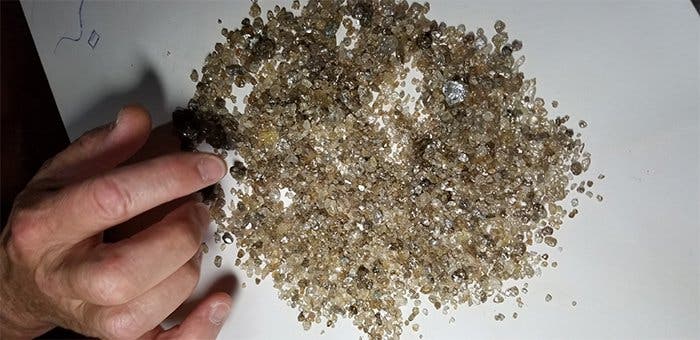A vast reservoir of magma lies undisturbed for billions of years. Researchers have seen signs of it in some superdeep diamonds.

Our planet’s general structure is fairly simple: there’s a core, a mantle, and a crust. But the more you zoom in, the more complex things start to get. The crust, the thinnest layer of our planet, is immensely complicated and we’ve only managed to dig through to 13 km deep — with the average thickness of continental crust being around 35 km. The mantle is strongly influenced by convection currents. Some of it slowly creeps towards the surface, carrying heat and material from the planet’s interior to the surface — while in other places, the mantle absorbs portions of the crust. As for the core, almost everything we know about it comes from indirect information, and it’s remarkable that we know anything about it at all.
Not all the mantle might be engaged in such motion, however. Geologists have long suspected that there are pockets of magma that haven’t been moved in our planet’s constant churning.
The theory first came to life when researchers analyzed the ratio of two helium isotopes (helium 3 and helium 4) in some volcanic eruptions. The ratio was surprisingly similar to that of extremely old meteorites that crashed on Earth, hinting that the magma that flew in the volcanic eruptions was also extremely old.
“This pattern has been observed in ‘Ocean Island Basalts’, which are lavas coming to the surface from deep in the Earth, and form islands such as Hawaii and Iceland” said research leader Dr. Suzette Timmerman, from the Australian National University. “The problem is that although these basalts are brought to the surface, we only see a glimpse of their history. We don’t know much about the mantle where their melts came from”.
Diamonds, however, are extremely sturdy, and they can preserve inclusions much older than themselves.
Most diamonds form around 150-220 km below the planet’s surface, and are carried towards the surface. However, some diamonds can form up to 800 km deep, and these super-deep diamonds are quite different from normal ones. Timmerman explains:
“Diamonds are the hardest, most indestructible natural substance known, so they form a perfect time capsule that provides us a window into the deep Earth.”
“We were able to extract helium gas from twenty-three super-deep diamonds from the Juina area of Brazil. These showed the characteristic isotopic composition that we would expect from a very ancient reservoir, confirming that the gases are remnants of a time at or even before the Moon and Earth collided. From the geochemistry of the diamonds, we know that they formed in an area called the ‘transition zone’, which is between 410 and 660 km below the surface of the Earth. This means that this unseen reservoir, left over from the Earth’s beginnings, must be in this area or below it.”

When the team analyzed the helium 3 to helium 4 ratio, they found the same ratio as in the old meteorites. Although the diamonds are “only” 500 million years old themselves, they were formed in a pocket of primordial magma, encapsulating some of the ancient helium 3 as it slowly diffused away.
This means that the diamonds were formed in such a pocket of unmoved magma, but we still don’t know where exactly this reservoir is and whether there is one big reservoir or multiple ones scattered across the globe. The composition of this reservoir is also unclear, but it is presumably quite dense, since it doesn’t seem to mix with the rest of the mantle, even after billions of years.
However, we now have confirmation that there is some material on Earth that has remained unmoved since the dawn of our planet, for some 4.5 billion years — and that’s pretty awesome.
The study has been published in Science.


